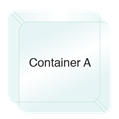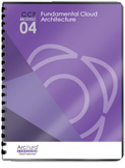Cloud Computing Patterns, Mechanisms > Mechanisms > C > Container
Container
Containerization is an operating system-level virtualization technology used to deploy and run applications and cloud services without the need to deploy a virtual server for each solution. Instead, they are deployed within containers. Using containers enables multiple isolated cloud services to run on a single physical server or virtual server while accessing the same operating system kernel.

The symbol used to represent a container. This symbol is similar to the organizational boundary symbol introduced in Module 1: Fundamental Cloud Computing , except that it has rounded corners instead of sharp corners.
The operating system kernel allows for the existence of multiple isolated user-space instances or multiple isolated runtimes known as containers, partitions, virtual engines, jails or chroot jails. Regardless of which runtime is used, when a cloud service executes within a container, it is running on a real computer from its point of view.
A cloud service running on a physical or virtual server operating system can see all of the provided resources, such as connected devices, ports, files, folders, network shares, CPUs, as well as the physical addressable memory. However, a cloud service running inside a container can only see the container’s contents and devices attached to the container.
This mechanism is covered in CCP Module 4: Fundamental Cloud Architecture.
For more information regarding the Cloud Certified Professional (CCP) curriculum, visit www.arcitura.com/ccp.
This cloud computing mechanism is covered in:
Cloud Computing: Concepts, Technology & Architecture by Thomas Erl, Zaigham Mahmood,
Ricardo Puttini
(ISBN: 9780133387520, Hardcover, 260+ Illustrations, 528 pages)
For more information about this book, visit www.arcitura.com/books.

